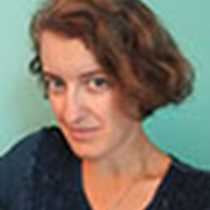This morning’s attempt to visit Brown Bluff was much more successful than yesterday’s attempt! We landed amid a heavy swell, leaping into the foam to walk along the rocky beach where curious Adélie and gentoo penguins waddled around us. The nesting birds had chicks at various stages of maturity, from tiny, fluffy babies to juveniles nearly the height of their parents. With its geological curiosities and weathered, towering boulders, this old volcanic site made for a fascinating walk, and the Cape petrels, snow petrels, and kelp gulls nesting in the area gave those with binoculars ample opportunity to use them. Skuas circled above, giant petrels occasionally glided by, and snowy sheathbills hopped about.
The Adélie colony was a raucous, chaotic jumble of adults and chicks, stretching across the land as far as the eye could see. Icebergs along the beach created labyrinthine paths for the penguins, but they traversed them easily. Lines of little birds made their way along the beach, and it seemed there were penguins everywhere we looked – still, we hadn’t seen anything yet.
The afternoon featured a stop at Paulet Island, where we were greeted with the sound, sight, and most of all smell of a penguin colony. All the way to the top of the barren hills, Adélie penguins were nesting, some with eggs, some with tiny chicks, and a good many with round, rambunctious chicks that were giving their parents all kinds of trouble. The stone hut built by Carl Larsen and his crew on the Swedish Antarctic Expedition of 1901-1903, when they spent an inadvertent winter on Paulet, is now the nesting site of several pairs. Unsurprisingly, skuas were also thriving in the area.
By the time we embarked, we were ready for a relaxing evening of cocktails and good company before making our way to dinner, where we enjoyed the conversation of humans even as the sounds of penguins echoed in our ears.







